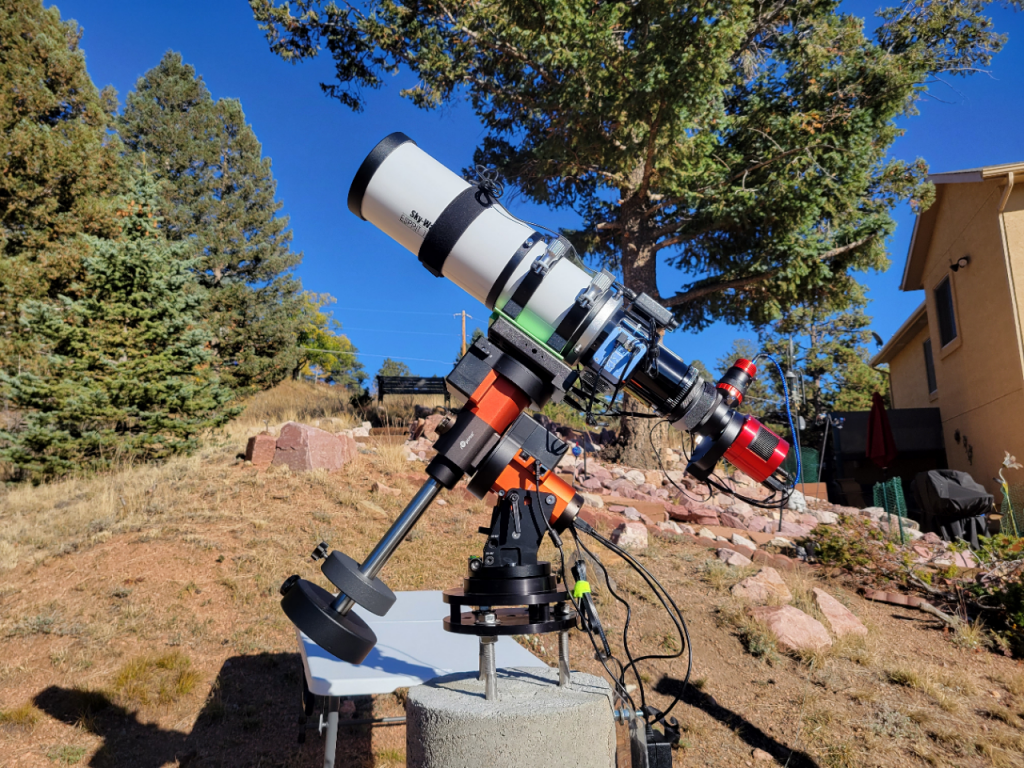After a long summer of short, cloudy evenings, I’m finally back at shooting astrophotographs. In the spring I picked up a new mono camera, the ZWO ASI533MM Pro, and a set of Optolong narrowband filters for hydrogen-alpha (7 nm), sulfur-II (6.5 nm), and oxygen-III (6.5nm). I also picked up the ZWO mini filter wheel so I could automate my filter changes. Last week I finally got them all out for some shooting, and I spent three nights shooting subs of the Cygnus Wall, a star formation region of the North American Nebula (NGC7000) in the constellation Cygnus.
Using my Sky-Watcher Esprit 100 f/5.5 refractor on its iOptron GEM45 mount, I was able to collect 84 5-min subs for each filter, resulting in a total of 21 hours of data. Guiding (I used off-axis guiding) was generally 0.5″ or better when the target was high in the sky, but it understandably degraded to almost 1.0″ when the target was closer to the horizon.
Processing was done in PixInsight. I used the Weighted Batch Preprocessing (WBPP) script in PixInsight to do all the stacking, calibration, registration, etc. and it always does a super job. Processing narrowband data in PixInsight actually seems easier than processing one-shot color data, despite starting with three master images (one for each filter) instead of just one. With this particular target I used the Hubble palette (SII red, Ha green, and OIII blue) to produce the final image. I used NoiseXTerminator for noise reduction and StarXTerminator to reduce the impact of the stars in the image, and I used Affinity Photo for the final tweaks.
This was my first attempt at imaging in narrowband SHO, and I’m eager to do more.


